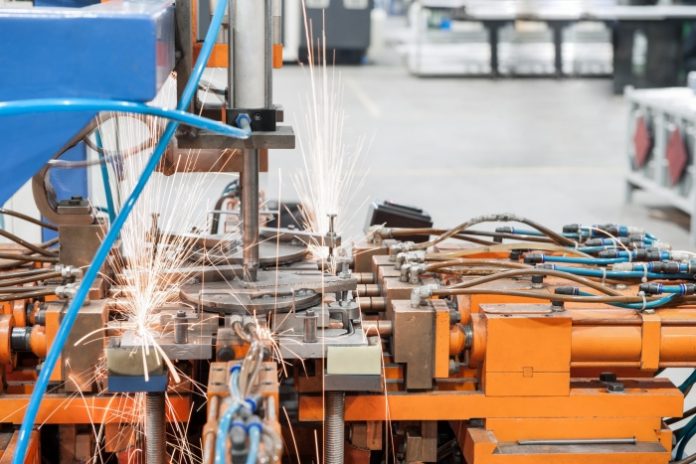In the past few decades, rapid mechanization seems to have taken over most of Europe and the Americas. And this shift has had quite the impact on the working classes. Funding required for a project was reduced, child labor died down, and human life became more efficient. Many mega-projects were processed and completed using a variety of methods, including hot riveting technology.
A hot riveting process usually involves thermally joining two plates or metals by constantly heating one point, passing rivets through it, then letting the system cool off. Hot riveting requires a few basic techniques. If you employ this method within your own factory, you will definitely save tons on annual funding and your production rate will increase.
What Is Hot Riveting And How Is It Done?
Hot riveting, in the simplest sense, is the proverbial “welding” of two or more materials together at specific points, usually by the application of heat or convection heating. Methods like these typically require that at least one of the two materials is a thermoplastic. A thermoplastic is any substance which expands and liquefies almost completely upon heating, and solidifies rapidly under pressure or lower temperatures.
A flaming hot rivet (which has been heated by any one of four methods) is placed inside a hole on the main plate. This hole is at a specific point so that the two plates can be joined easily. Once the rivet is passed through, another worker uses a high compression machine to cool the rivet down and expand it. Since the rivet and one of the materials both are thermoplastics, they readily change shape and become permanently integrated into each other. In this way, the rivet sticks inside and doesn’t come out.
Benefits of Hot Riveting:
Hot riveting, like any money-saving formula, has numerous applications throughout the industry. More importantly, it reduces costs and enhances machine efficiency, and is generally a safer method. Below are a few of the benefits discussed in detail:
Faster Method:
Hot riveting is generally a much faster method than regular riveting or welding. Normally, the latter two require an immense amount of heat. Hot riveting, however, only requires you to heat the rivets, which only requires a moderate amount of heat. The method can be done in the manner of seconds, with each rivet taking up to a maximum of 60 seconds.
Reduces Costs and Labor:
Spending hundreds on a welding machine is discouraging enough. Now imagine having to spend even more on labor costs and salaries. The semi-mechanized process of hot riveting only requires a maximum of two workers. You will also likely end up spending money only on the compression shaping machine and the rivets.
Safer and Securer:
This is by far the biggest benefit of using hot riveting. The process is not only fast and cheap, but is also twice as secure as any regular form-closing process. Since the rivets are inserted at a high temperature, only the same amount of heat can pull it out. So a hot-riveted piece of metal won’t break apart at room temperature, and will be more secure than any ordinary welding process.
Chief Applications:
Hot riveting is used mainly in the permanent mounting of materials, such as PCBs and covers to a building, and in permanently fastening lead frames. It is also handy to completely secure microelectronic components, to protect from user and transport damage. Surprisingly, the process has many applications in vehicles as well, from the engine, the control units, door locking systems, to even the headlights and taillights. It can even be employed in the mass production of batteries, especially for cars and trucks.
Find a Home-Based Business to Start-Up >>> Hundreds of Business Listings.

















































